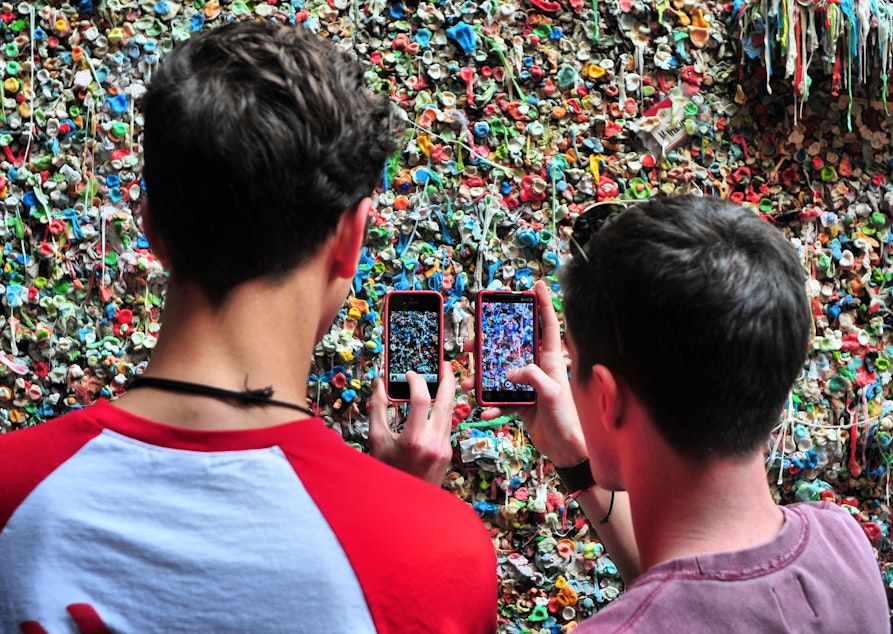Secrets Of The Gum Wall: Drunk People Eat It!

Better hurry if you want to see the famous – some might say infamous – gum wall at Seattle’s Pike Place Market, at least in its current incarnation. The market plans to scrub down the layers and layers of chewing gum stuck on the walls of Post Alley.
Mercedes Carrabba, owner of Market Ghost Tours and Ghost Alley Espresso, told KUOW’s David Hyde that she’s excited about the scrubdown.
Sections have been removed in the past, she noted.
“It’s like an organism – it grows back. Or like a lost limb, it returns,” she said. “That’s actually the most exciting part, is having people continue to interact with it. Even if it goes away briefly, it still comes back.”
If you want to see it in its current form, get down to the market before the scrubbing begins next Tuesday. If you do, the market is running a photo contest that ends Monday.
Sponsored
Carrabba said many people don’t know the gum wall ritual only began in 1991.
“It was really a very organic birth,” she said. When Unexpected Productions took over the market theater, patrons began putting gum on the wall and sticking pennies in it. The pennies are long gone, the gum remains.
“So what started as a very improvisational act by theater-goers turned into an international attraction,” she said.
That was helped along when National Geographic magazine ran a two-page photo. Newspapers published feature stories, and tourist guide books began mentioning it, she said.
For Carrabba, the gum wall is one of the city’s most amazing features because “the public creates it.”
Sponsored
“It wasn’t a landmark that was created, it wasn’t designed to be a tourist destination,” she said. “That is the really incredible part of the gumwall: It seriously is a completely interactive part of Seattle.”
Yeah, about that interactive stuff …
“There are people that eat the gum. Late at night, it does happen. There are people that leave the bars at 2 a.m. and place bets with each other of who will eat it,” she said. “All of it’s being continually renewed.”
Produced for the Web by Gil Aegerter.


